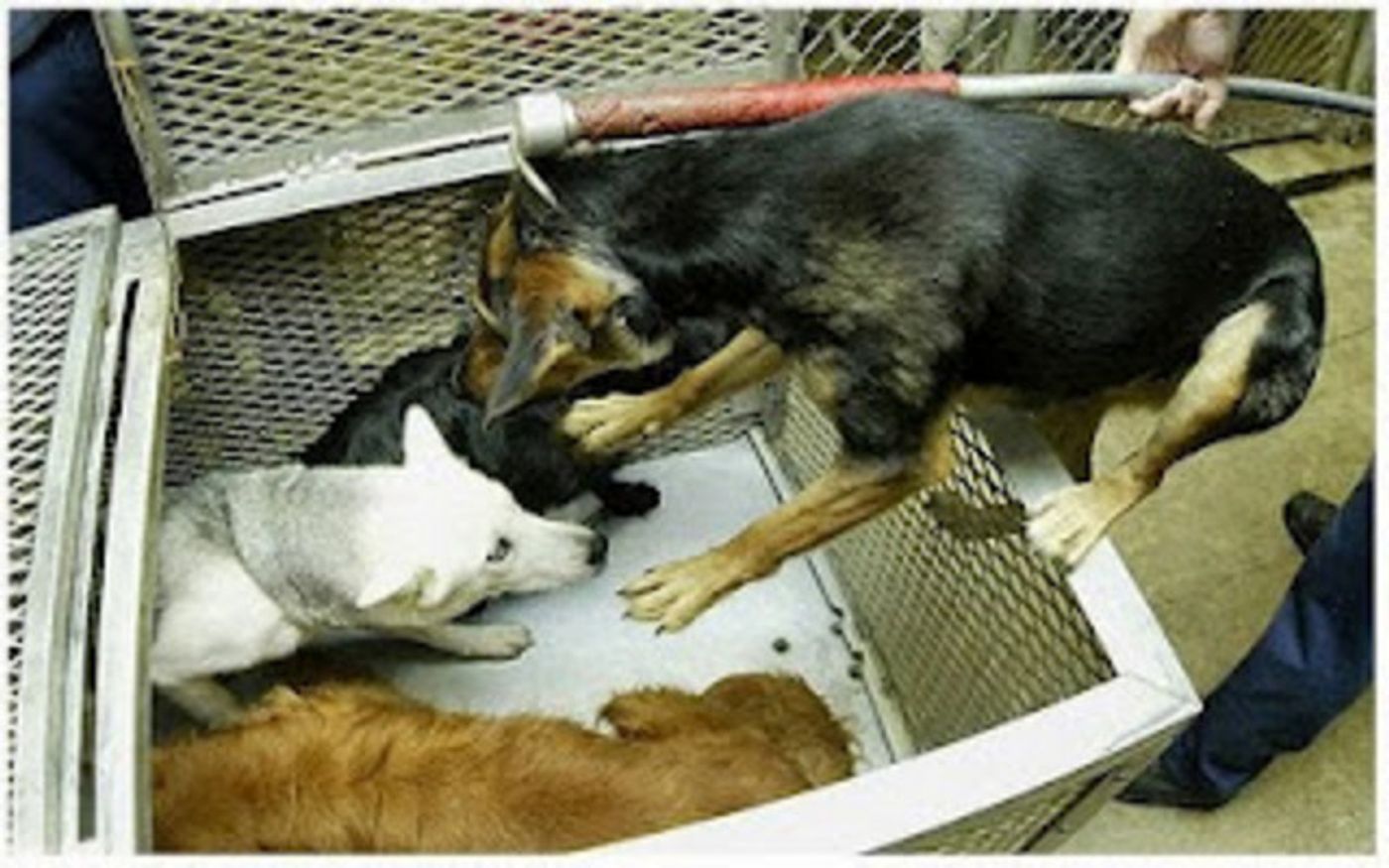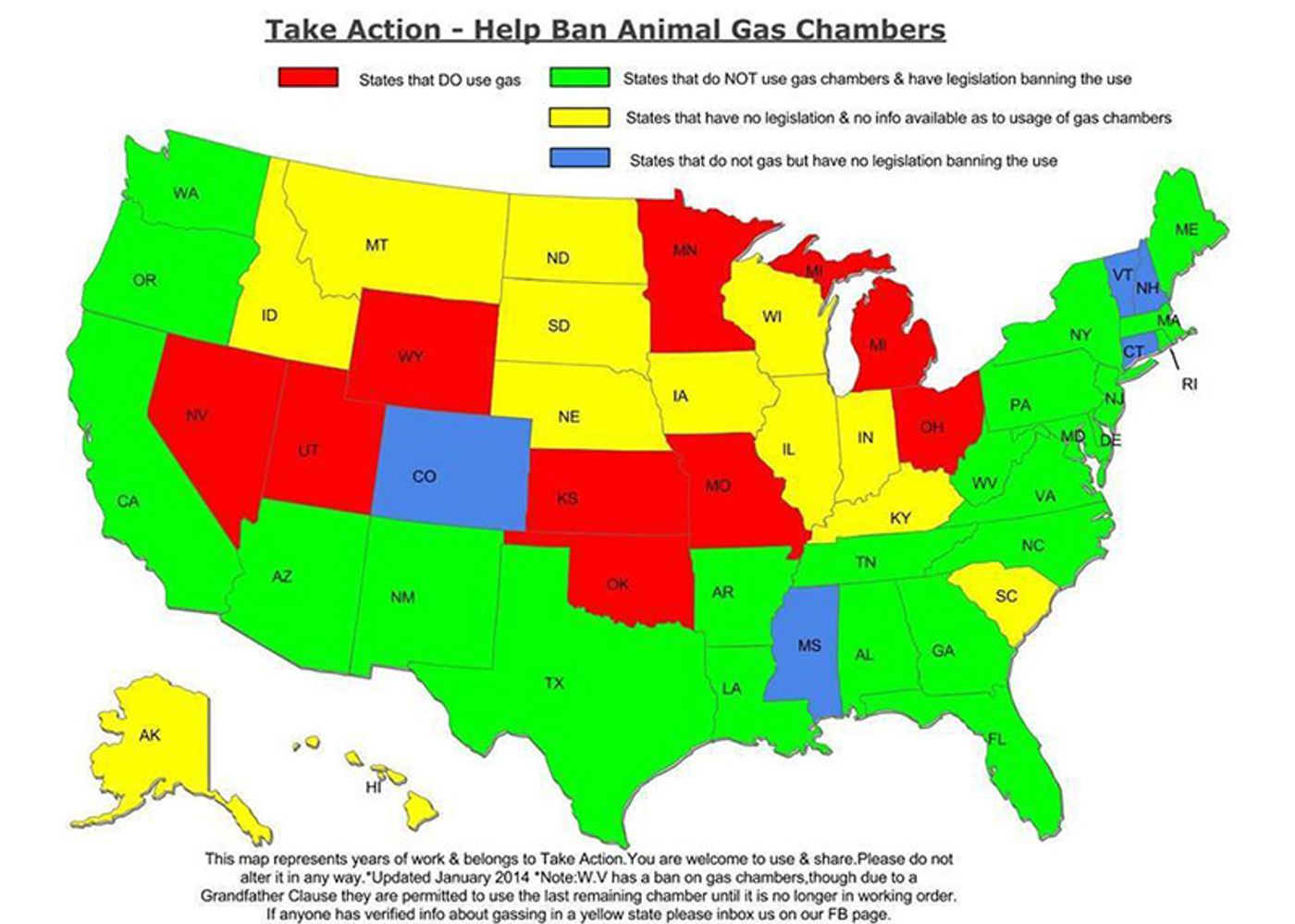To write another article denouncing the horrors of gas chambers that are used in shelters throughout the US to euthanize unwanted cats and dogs would be overkill - pun unintended. However, I do believe it is necessary to continue to bring awareness about this topic into the public mindset. Perhaps many, like I myself was, are ignorant that this malpractice is still ongoing within the United States. The purpose of this article is to educate and spread the word, so that as a country, a state, a community or a town, we can guarantee that policies regarding the treatment of animal euthanasia changes.

Death by gas chamber was first utilized by the Nazis in World War II, and it is outlawed today, as it perhaps one of the most traumatic ways to die. Animals who are euthanized by gassing are more often than not crowded into a small, dark cage that smells of the urine, feces, and blood of animals who have already passed through it. Many animals may be put into the box at once time, most likely in an effort to save money on carbon monoxide. However, when small and large animals (both dogs and cats) are forced into the chamber, they become frightened and stressed and many fight each other for the last breath. Injuries are extremely common; when shelter workers unload the dead bodies from the chamber they often see broken bones and wounds on the animals. Perhaps the most disturbing aspect of the process is its length; the animals may take up to forty minutes to die.
Although approximately 70 chambers in animal shelters in 13 states have voluntarily closed their chambers since 2013, and outright bans on chamber use for pets have been passed in Pennsylvania, Texas, North Carolina and the Commonwealth of Saipan, there still exists an extreme gap in legislation. There are now only 25 states with full bans in place, and gas chambers are still known to be in use in at least 7 states. This is because the American Veterinary Medical Association (AVMA) has failed to condemn the use of chambers in shelter settings, despite its statement that euthanasia by injection is the most humane method of euthanasia currently available.

The alternative to gassing animals, a lethal injection (EBI) which puts the animal “the sleep” often in the arms of a loved one in a private, peaceful room, is exponentially more human. If done correctly, the animal dies very quickly, within 3-5 seconds and loses consciousness without pain or struggle. Which brings us to the question of why? When both options are financially equivalent and EBI injections so clearly cause less distress to both the animals and the humans distributing the euthanasia, the answer seems obvious. Voice your opinion
here.
Warning: The above footage is disturbing and graphic
Sources:
The Humane Society,
Change.org,
Democratic Underground,
Animal Aid USA










